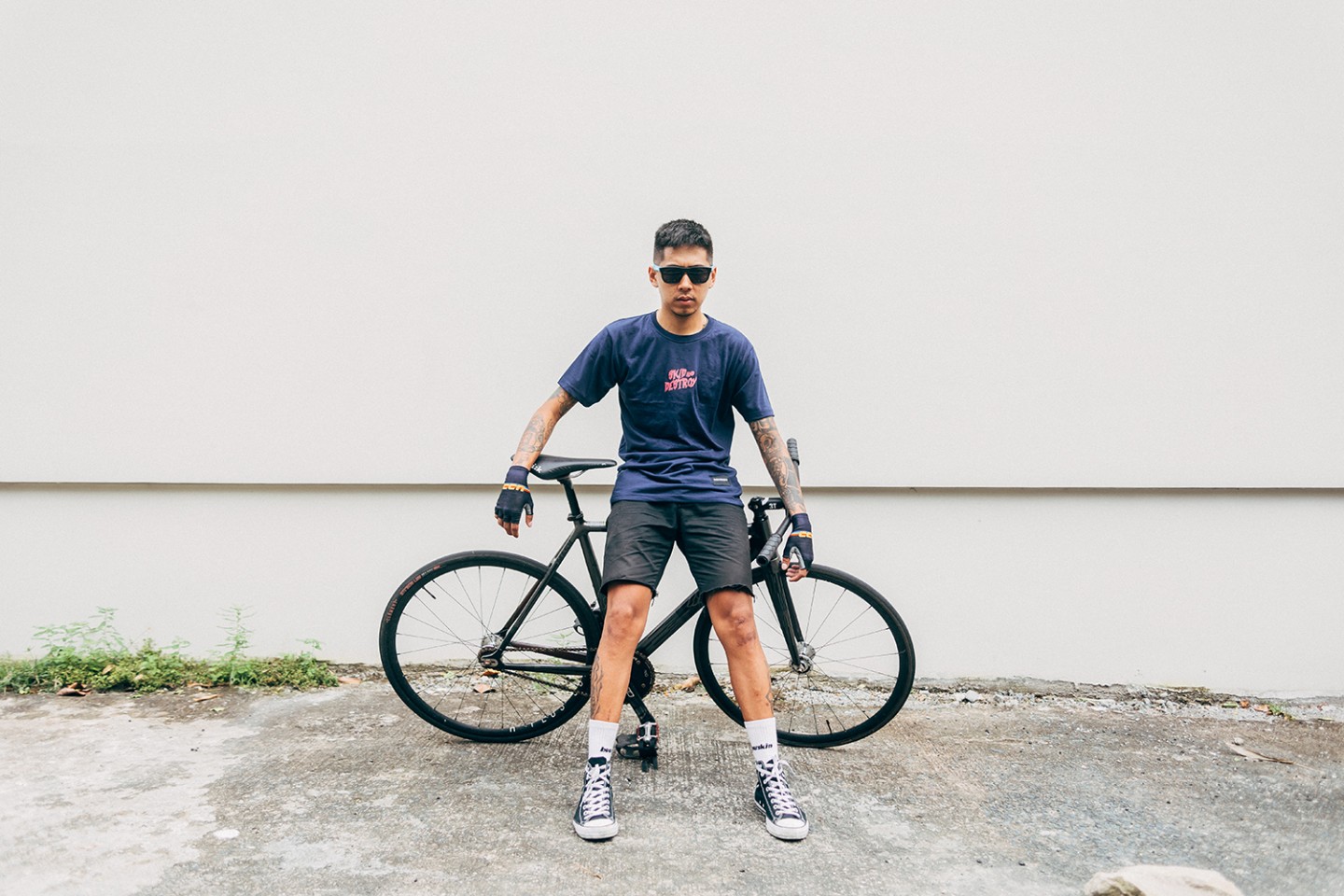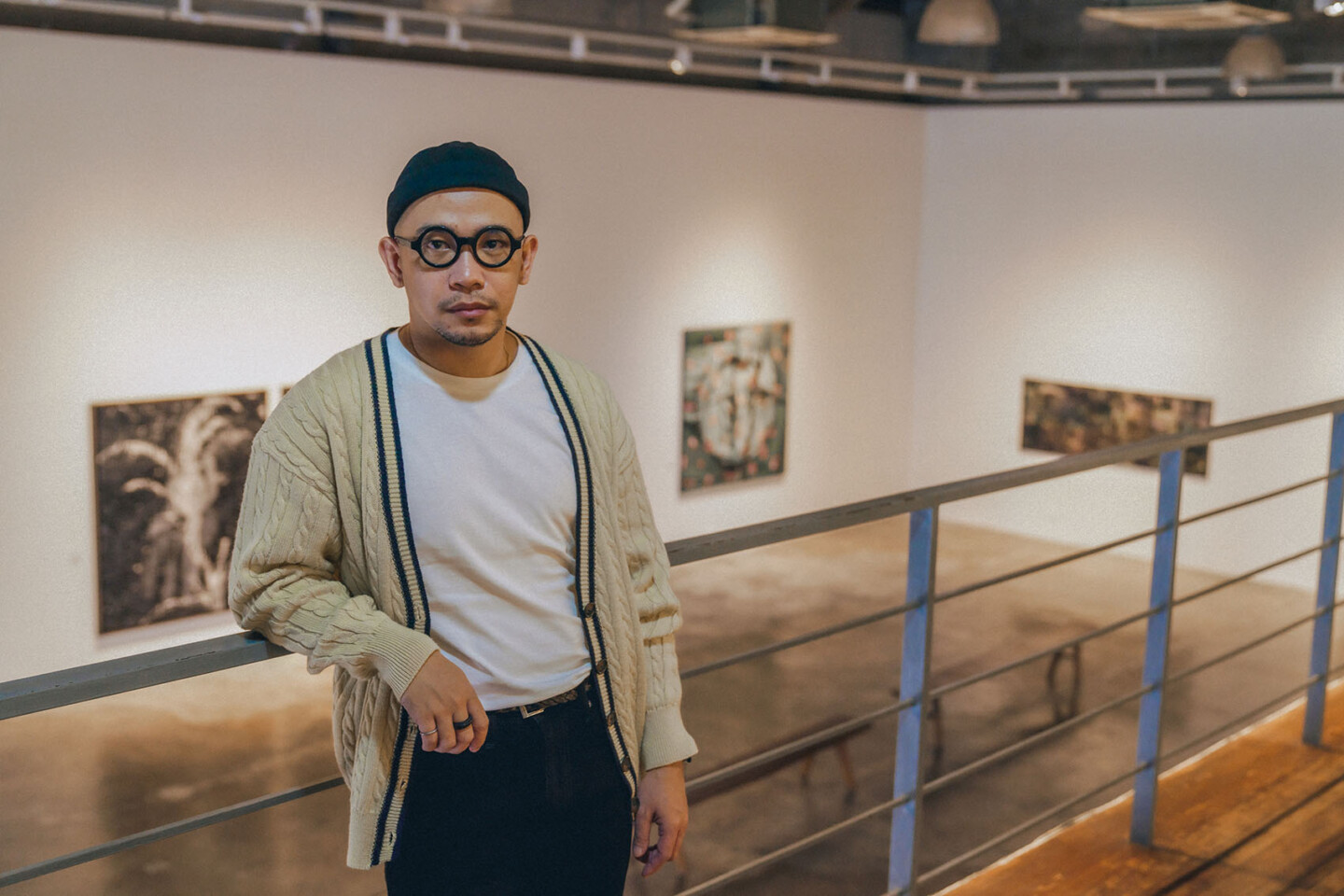
In recent years, Kim Oliveros has made a name for himself; his works becoming coveted pieces. These coveted pieces are artworks that served as Kim’s way of sharing his childhood and early memories with others. As an artist, he is particularly interested in shared narratives through retracing certain times, places, and objects in his life.
Recently, however, Kim has become known not just for his talent, but for his work ethic as well. Especially palpable is his mastery of technicality and inclination towards an organized approach. These traits manifest in his style; his works are clean and print-like. No heavy brushstrokes. His approach a stark contrast to the image of artists people usually have in mind—sporadic and spontaneous.
Kim echoes this observation. He is well aware that he has an organized way of approaching his work. His workspace, albeit small, leans towards functionality—with materials he needs within reach in order to focus on the important stages of the process. Before he paints, he has his colors laid down on his palette so that he can just immediately and continuously mix them.
“I want everything that I’m going to use, mixed already. And it should be clean as much as possible because for me it reflects the work I do. It’s really clean, so I can work comfortably.”
In this conversation, Kim expounds on his process-based approach to art-making, who and what influenced him to have an organized approach, and how he works with galleries.
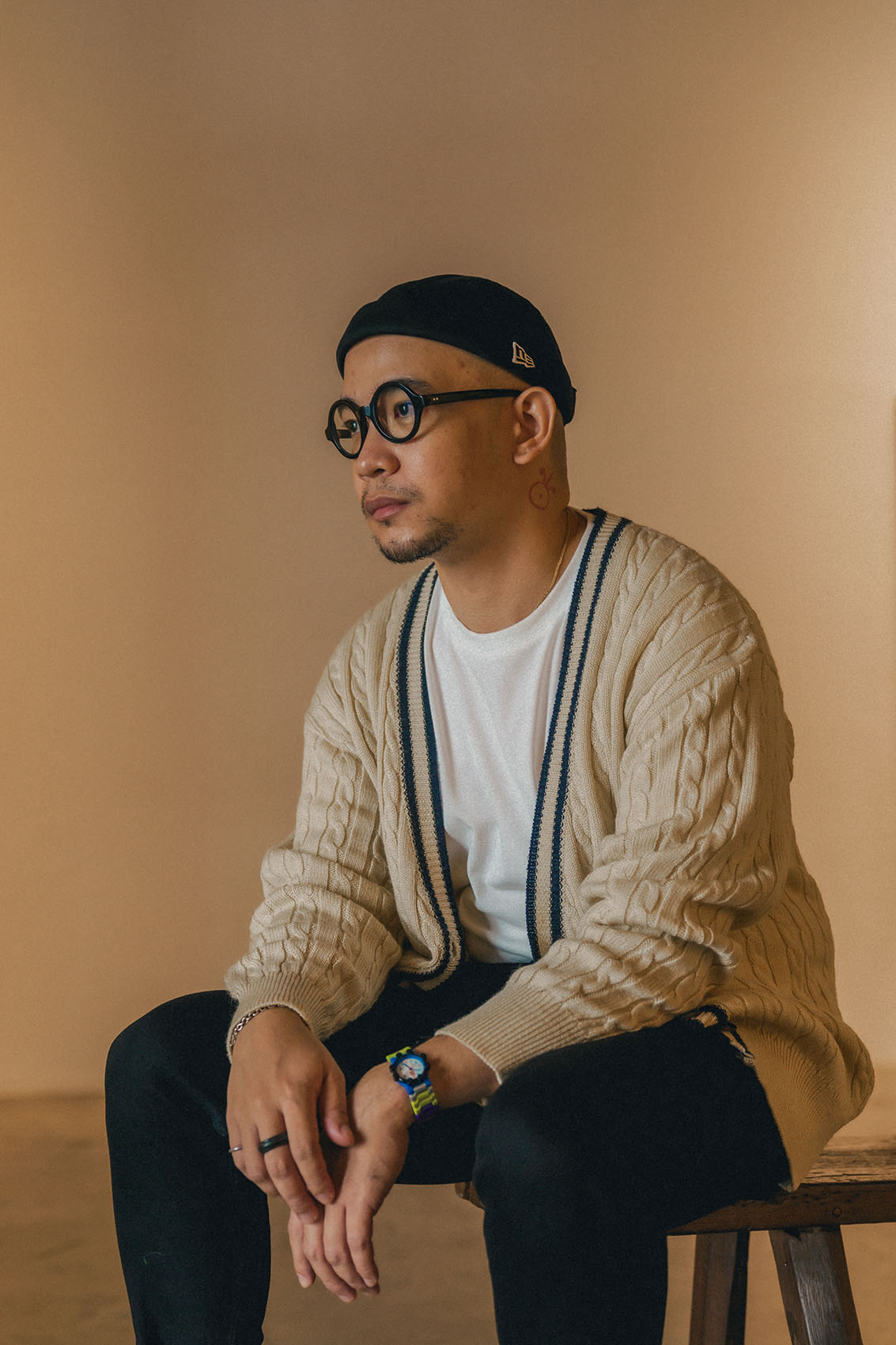
Influences in Kim’s approach and art style
Kim’s parents were his biggest influences in how he became technical or organized in making his works. His mom would often make patterns, and in doing this she was very clean with her space—even having a cabinet for everything. His dad, on the other hand, taught him how to plan. He recalls one of his dad’s plans had a box of buildings and it would be in rows. It had a coloring process which indicated the time period the floors needed to be finished. This system inspired Kim when it came to his own works.
The other great influence in his art-making was the community he grew up in. He shares that he grew up going to the factory where his mom worked. The people working there would each have a specialty. “It’s a garment factory so it’s a team effort. I’m very fascinated by the process. How they build their product and the step by step ways to achieve it.”
He was particularly intrigued by the synergy among the various members of the team—how one person would do their part then pass it on to another. “Parang ganun yung namulatan ko na process. Feeling ko noong bata ako parang nagmamagic sila, yung step by step na yun, kasi parang ilang days nilang gagawin tapos makikita mo yung finished product.” (It was the process I was exposed to. As a child, I felt that they were doing magic. Because by the end of just a few days of doing their step by step approach, you’ll already see their finished product.)
Kim learned a lot from his art education and work too. He describes himself as a product of summer workshops and the School for the Arts program in high school. Later on, he studied Fine Arts in the University of the Philippines – Diliman, majoring in Studio Arts and Visual Communication.
In Studio Arts he learned more of the technical and conceptual sides of doing work while in Visual Communication, he dabbled more in the process of preparing his subject and how to make a reference, like photographs and photoshop. It was in the variety of subjects that he took that he was able to play around with different forms and techniques.
This exposure to a process-based approach and a plethora of forms and techniques proved to be of great help when Kim worked as an assistant painter for artists as he needed to be aware of their creative process.
“You need to follow what they’re doing in their work. You need to be flexible in terms of techniques because each artist has a different way on how to do their work.” He added that he needed to be more flexible while working for other artists because they hired him for his artistry and for his input on their works. “At the same time, you think of the timeline kasi hindi mo siya work, work siya ng ibang artist. You help them, and they have their own timelines sa process nila. So ikaw papasok ka lang sa certain timeline na yun to help. You have to be balanced din. Kung may makita kang mali, you speak up.” (At the same time, you think of the timeline because it is not your actual work, it’s the artist’s work. You need to help them, and they have their own timelines in their process. So you usually come in at a certain time to help. You have to be balanced too. If you see something wrong, you have to tell them.)
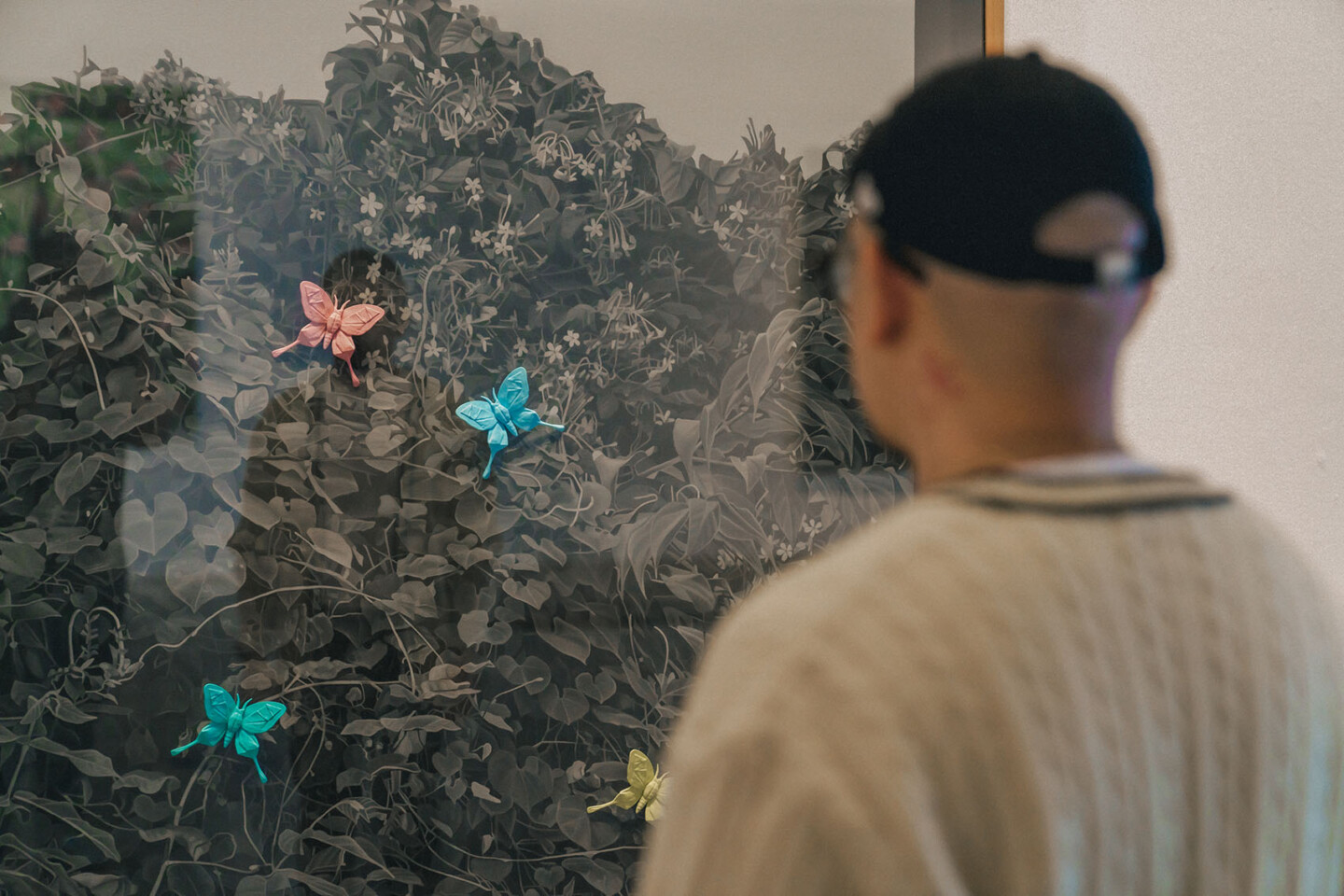
A peek into Kim’s process in his art-making
A big part of Kim’s work revolves around his childhood memories and experiences, and this is made possible through his habit of documenting everything around him—a diary for his memories and several notebooks for colors, techniques, and research. He then marries these words to his art-making process which he calls a backwards diary.
“Think of it like you’re walking around, and you see objects. Then you want to remember things about it. For example a certain stuffed toy you found, you’d want to note how you played with it, how it felt. You need to be aware of your surroundings so that you can document everything and go back to it in the future.”
A day of art-making for Kim is very systematic. For one, the way Kim approaches his day highly depends on how he wakes up and the extent of his current project. He first tries to calm down by starting his day with a mantra or an activity like reading, taking walks outside, or biking for a bit. Then when he begins the actual work, the first step is focused on the installation. Then afterwards, depending on the work, when making origami, he folds a certain number of origami, or if it’s an installation, he prints and processes it. Then half of the afternoon to midnight, he would be focused on painting, and on that painting, he approaches it like it’s a puzzle—piecing together the pieces.
“Kunwari magpapainting ako and wala pang subject parang babalik ako on that page ng memory na yun. Tapos [magdedecide] ako kung this part of memory will be useful for this painting. You tweak and parang paglalaruan mo siya in a way.” (When I’m painting and there’s no subject yet, I will go back to that page of the memory. I will then decide on what part of the memory will be useful for this painting. I tweak and play with it in a way.)
Once done for the day, he prepares or draws what he needs to do or paint the next day. Doing so allows him to know how many hours he will be able to finish the project and give him a better sense of time and effort needed.
Once done, he doesn’t often store his artwork in the same room where he currently works. When he finishes something, he immediately moves to another one. He avoids working on multiple paintings or projects at once. Being represented by a gallery helps a great deal with this so they can get the work as soon as he finishes.
“Meron akong parang tendency na pagnakikita ko yung work, kahit alam ko na tapos na siya, pag may makita ako na gusto ko pang baguhin parang icocontinue ko yun. So parang wala, hindi ako matatapos kung nandito pa siya. Pag hindi pa siya makukuha ng gallery I wrap it and tinatalikod ko na.” (I have this tendency that when I see the work and see something that I want to change, even when I know it’s done, I’ll continue working on it. It’s like I can’t completely finish it when the piece is just there. If the gallery can’t get it, I wrap it and face it backwards.)
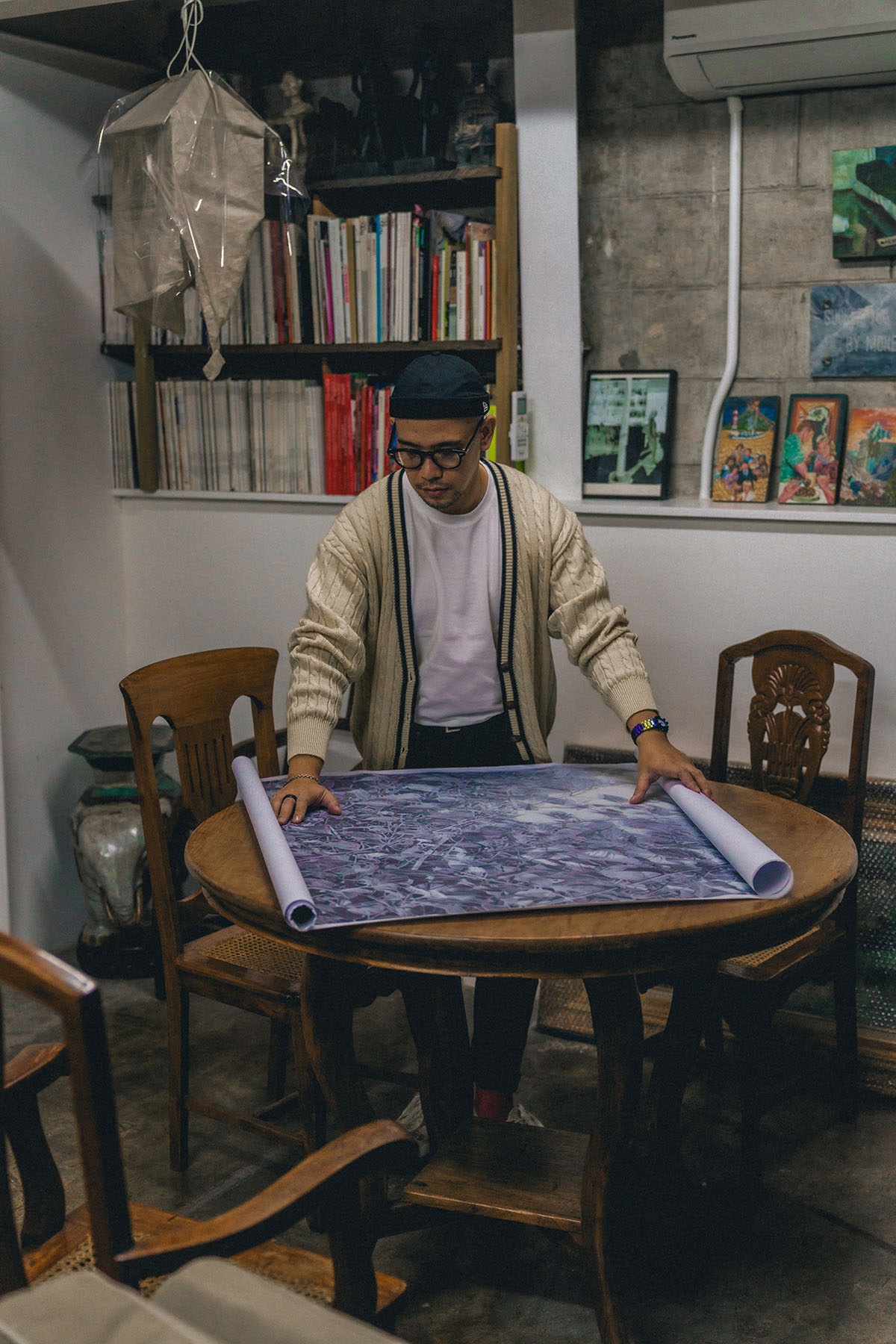
As a gallery artist and curator
Another interesting aspect of examining Kim’s overall process is how he approaches working with galleries—planning what artworks to show and how to do it. To him, it is of great help when specific dates and places are provided.
“Parang… you imagine it na kung ano mga works mo na gusto ilagay. Kasi ako mayroon akong list of works na gustong gawin. Hindi ko siya naproprocess pero naiimagine ko na siya—na how to be, ano magiging itsura niya sa space. Kunwari binigyan ako ng gallery na this month ganitong space ka, parang I already have in advance, na iimagine ko paano ko paglalaruan yung space na yun. So… magproprocess ka lang ng matagal sa technical side at sa time ng paggawa mo nung painting. Mas nakaplan na siya ahead.” (I feel like the artist should imagine what works they want to put. Because I usually already have a list of works I want to make. I can’t process it just yet, but I can imagine it–how it should look in the space. For example, the gallery gives me a certain space, because of that I can already, in advance, imagine how to play within that space. So you just spend time processing the technical side and planning the painting. That way, it’s planned ahead.)
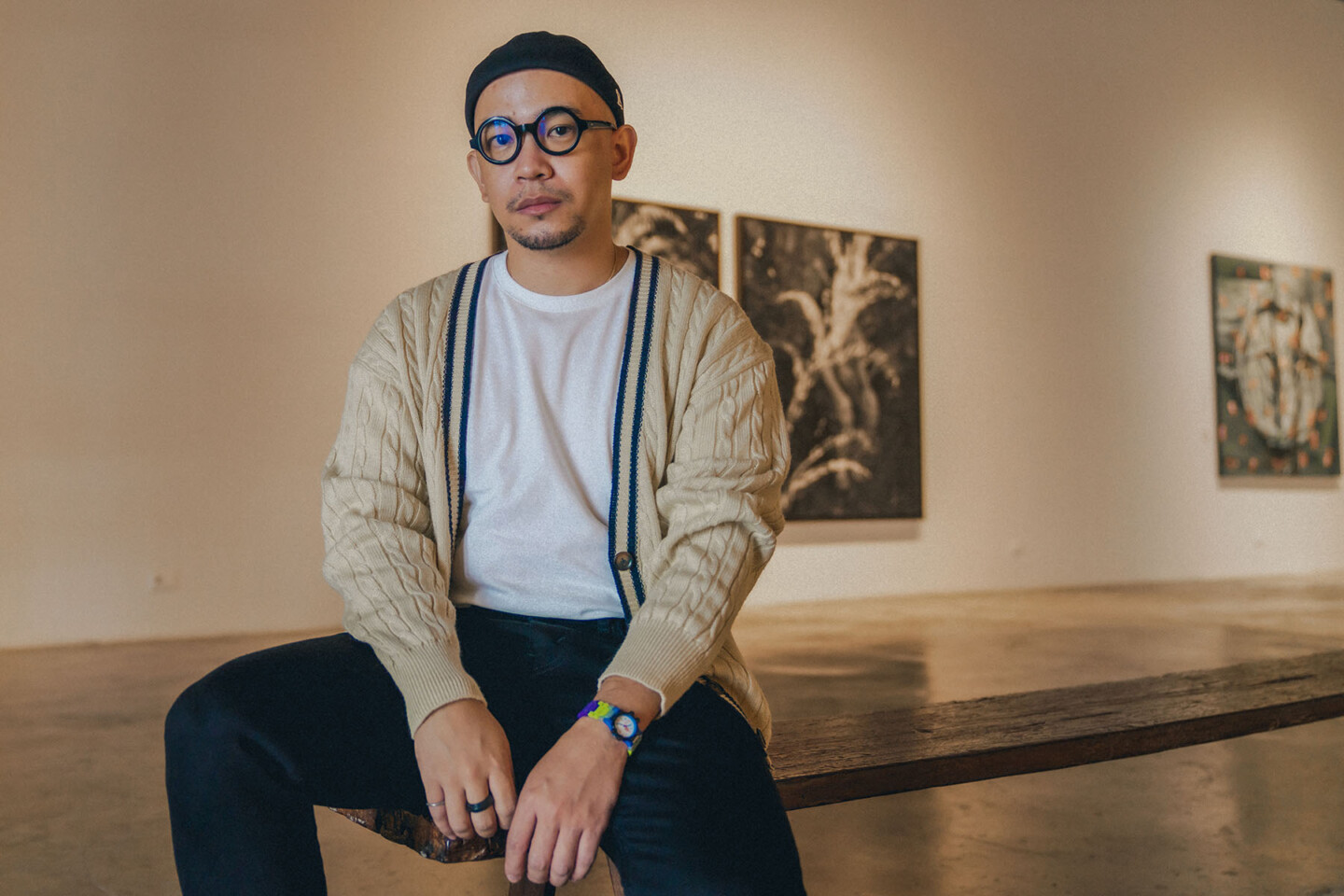
He applied a similar approach the first time he served as a curator last June for the show When the Past is Always Present held at Finale Art File. Acknowledging the fact that all artists he invited to participate have their own process when it comes to making art, Kim made sure to study their working process. From here, he simply gave them a title to base their works on, as well as parameters on how big the space is, and the rest was up to the artists.
“I don’t like a group show where the artist is stuck to one concept or theme. I would rather provide only a title and from there see how it progresses. It’s okay if the show is messy, and the paintings are different. I think it’s the job of the curator to assemble the story of the works. Then all the works will have a storyline.”
But he didn’t just choose whichever artist that came to mind. Kim chose the artist knowing their works would more or less work with the title he gave. The group show has been curated from the moment he began the process of selecting the featured artists.
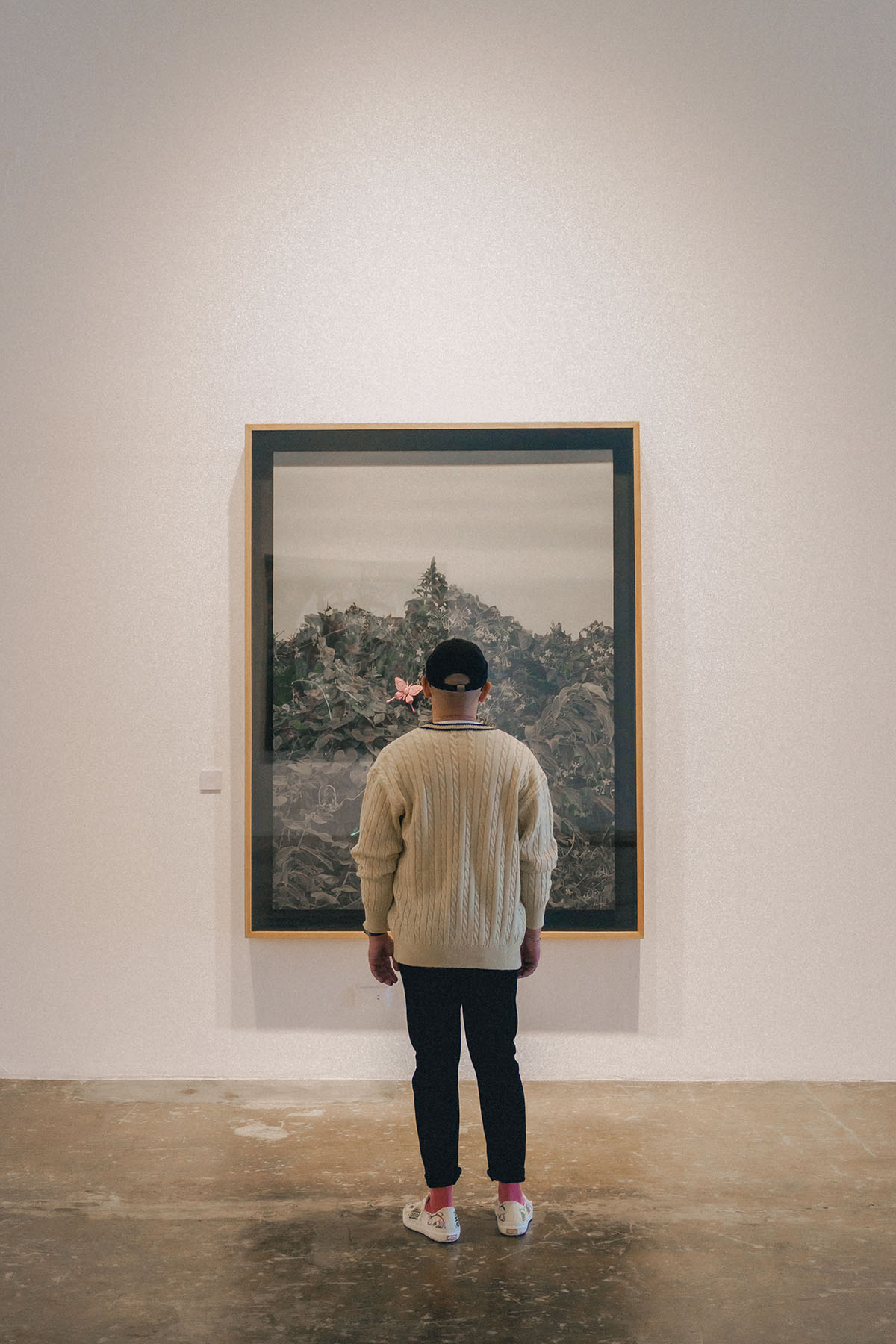
On the varying approaches to art-making
Kim believes that his work is an accumulation of the processes he developed over time, and what he practices in visual arts. He does enjoy having a system in place because he doesn’t need to think of what he needs to do day by day on the fly.
“Having a strict routine and how you plan your day are important. Otherwise it will be chaotic so I always plan it ahead so I’m more aware of my time, timeline, [and] process, and [to have] clarity of what I’m doing next. I think subconsciously your mind will be clear if you enjoy your process. So you become more present doing your art.”
But whether an artist approaches work in a technical and systematic manner or spontaneous and sporadic, Kim shares that artists are like children in the playground. They have their own ways of making art. While he is personally more comfortable in his current process, he also acknowledges that other artists have their own unique processes and perspectives.
CREDITS
WRITER Mica Sarenas
EDITOR Tricia Quintero
PHOTOGRAPHER Ed Enclona
SUPPORT PURVEYR
If you like this story and would love to read more like it, we hope you can support us for as low as ₱100. This will help us continue what we do and feature more stories of creative Filipinos. You can subscribe to the fund or send us a tip.




